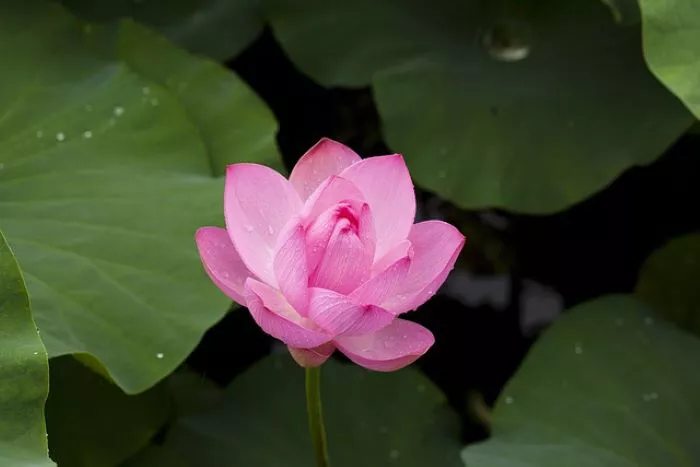The lotus flower, known scientifically as Nelumbo nucifera, is a symbol of beauty and purity in many cultures. It is admired for its stunning blooms and large leaves. Growing lotus flowers from seeds can be a rewarding experience for gardeners. This article provides a comprehensive guide on how to plant lotus flower seeds effectively, ensuring successful growth and beautiful blooms.
Understanding Lotus Flowers
Lotus flowers are aquatic plants that thrive in shallow waters. They are native to warm climates and are commonly found in ponds, lakes, and wetlands. The flowers bloom during the day and close at night, creating a stunning display. Lotus plants have large, round leaves that float on the water’s surface. The seeds are produced within a distinctive seed pod that forms after flowering.
Selecting Lotus Seeds
Choosing the right seeds is essential for successful planting. Lotus seeds are typically available in garden centers or online. When selecting seeds, look for the following characteristics.
Freshness: Ensure that the seeds are fresh and viable. Older seeds may have lower germination rates.
Species: Consider the species of lotus you wish to grow. The two main types are the Asian lotus and the American lotus. Each has different growth habits and flower colors.
Preparing the Seeds
Before planting lotus seeds, it is necessary to prepare them for germination. This preparation helps to break seed dormancy and promotes successful sprouting.
Scarification: Lotus seeds have a hard outer shell. To facilitate germination, gently file or sand the seed coat. Be careful not to damage the seed inside. This process is known as scarification and allows moisture to penetrate the seed.
Soaking: After scarification, soak the seeds in warm water for 24 to 48 hours. This helps to soften the seed coat and encourages germination. Change the water every 12 hours to keep it fresh.
Choosing a Planting Method
There are several methods for planting lotus seeds, each with its advantages. The choice of method may depend on your gardening preferences and available resources.
Direct Planting in Water: This method involves planting the seeds directly in a pond or water garden. It is suitable for gardeners with access to suitable aquatic environments.
Container Planting: For those without a pond, planting lotus seeds in containers is an effective alternative. This method allows for better control of growing conditions.
Planting Lotus Seeds in Containers
If you choose to plant lotus seeds in containers, follow these steps for successful growth.
Selecting Containers: Choose a container that is at least 12 inches deep and wide. The container should have drainage holes to prevent waterlogging. A plastic or ceramic pot works well.
Preparing the Soil: Use a heavy soil mix that retains moisture but drains well. A mixture of clay soil and loamy soil is ideal. Fill the container with the soil, leaving a few inches of space at the top.
Planting the Seeds: Once the seeds have soaked and are ready, plant them about 2 inches deep in the soil. Space the seeds at least 6 inches apart to allow for growth. Cover the seeds gently with soil.
Watering: After planting, fill the container with water until it is about 3 to 4 inches above the soil surface. This provides the necessary moisture for germination.
Caring for Lotus Seedlings
Once the seeds are planted, proper care is essential for healthy growth. Follow these guidelines to nurture your lotus seedlings.
Light Requirements: Lotus flowers require full sunlight for optimal growth. Place the container in a location that receives at least six hours of direct sunlight each day.
Water Level: Maintain the water level in the container. As the seedlings grow, adjust the water level to keep it consistent. The water should always cover the soil by a few inches.
Fertilization: After the seedlings have developed a few leaves, you can begin fertilizing. Use a slow-release aquatic fertilizer or a balanced fertilizer diluted in water. Follow the manufacturer’s instructions for application rates.
Transplanting Lotus Plants
As the lotus plants grow, they may outgrow their containers. Transplanting is necessary to provide more space for root development.
Timing: Transplant lotus plants in the spring or early summer when the water temperatures are warm. This promotes healthy growth and reduces transplant shock.
Choosing a New Container: Select a larger container or a pond for transplanting. Ensure it has adequate depth and space for the lotus to spread.
Transplanting Process: Carefully remove the lotus plant from its current container. Gently separate the roots and place the plant in the new container or pond. Fill in with soil and water as needed.
Maintaining Lotus Plants
Once established, lotus plants require ongoing care to thrive.
Water Maintenance: Keep the water level consistent, ensuring that the roots are submerged. Monitor for any changes in water quality and replace the water if necessary.
Pruning: Remove any dead or yellowing leaves to promote healthy growth. Pruning helps prevent disease and encourages new growth.
Winter Care: In colder climates, lotus plants may need special care during winter. If grown in containers, move them to a frost-free location. If planted in a pond, ensure the water depth is sufficient to protect the roots from freezing.
Conclusion
Planting lotus flower seeds can be a fulfilling endeavor that enhances any garden or water feature. By following the steps outlined in this article, you can successfully prepare, plant, and care for lotus seeds. With the right conditions and care, you will enjoy the beauty of blooming lotus flowers and the tranquility they bring to your outdoor space. Whether you choose to grow them in a pond or containers, lotus flowers are sure to be a stunning addition to your garden.


